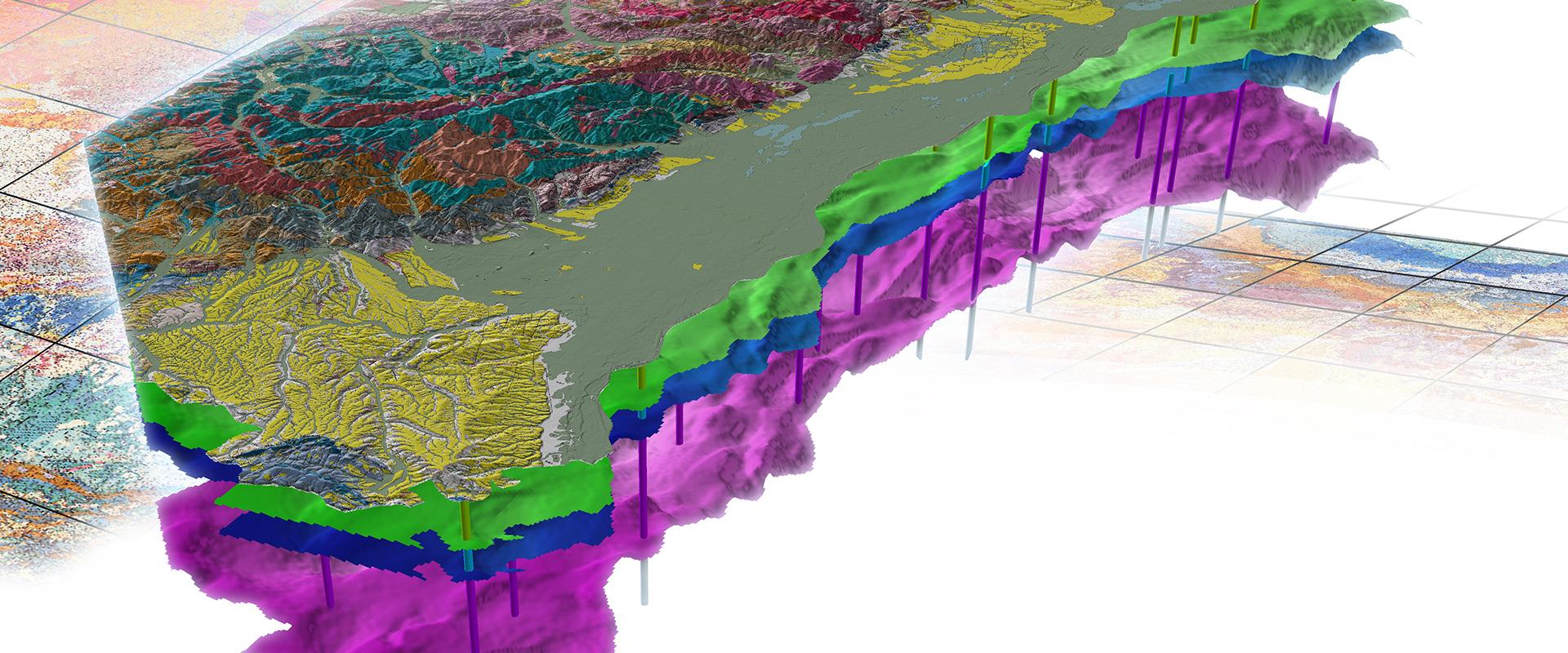The GeORG project: Deep geological potential of the Rhine Graben
Transcription
The Upper Rhine Graben: home to millions, an impressive landscape with varied architecture, and not just in places visible to the naked eye. Indeed, the Upper Rhine Graben's subsoil abounds in geological resources. It contains for instance the largest drinking water resource in central Europe.
3-D animation of GeORG data
In the Roman era, thermal and mineral water were extracted from hundreds of metres underground. Other resources, such as salt, were also extracted. Oil holds an equally important place, with many boreholes and facilities deep underground for oil production and research. But there are other geopotentials which are currently underutilised.
To develop them, the trans-border GeORG project was initiated between Mainz and Basel. The acronym GeORG stands for Deep Geological Potential of the Upper Rhine Graben. Over 4 years, specialists from France, Germany and Switzerland established a common geoscientific database, supported by the European Union in the framework of the Interreg IV Upper Rhine Project. The project allowed for the compilation and harmonisation of thousands of geological statistics from drilling and geophysical measurements.
The enormous amount of data and the complex geological structure of the Upper Rhine Graben were the biggest challenges of project. GeORG and we were able to meet our objectives thanks to modern computing techniques and a team of skilled experts and scientists.
Based on this data, a complex 3-D geological model of the Graben's subsoil was created. The model reached a depth of 7km. It provided a picture of the geological strata and their temperature range. In the cities of Basel, Strasbourg and the Haut-Rhin Department, real-world projects were established based on the project's results.
The importance of the subsoil as a space for infrastructure is growing. This regards materials for building and communications, underground storage and networks for energy, telecommunications and water. Such uses can be complementary, competitive or mutually exclusive. The GeORG project's 3-D geological model is also a planning tool which can contribute to the management of the subsoil by including the development of solutions adapted to the problems encountered. In this way, in Basel, solutions were found for the planning of northern and eastern roads. GeORG thus provided the basis for sustainable subsoil planning.
The urban community of Strasbourg launched in 2009 its Territorial Climate Plan. Objectives: 3 x 30. 30% lower energy consumption, 30% fewer greenhouse gases and city-wide coverage of 30% or more renewable and reclaimed energy. The city of Strasbourg, like the rest of the Upper Rhine Graben, has a strong geothermal gradient: more than 50 degrees per kilometre. The 3-D model developed as part of the GeORG Project allowed us to determine its geothermal potentials and to inform our industrial partners. The purpose of the BRGM study is to establish the availability of deep geothermals. That information is integrated into our strategy for energy migration, which includes our public-heating networks.
Geothermals play an important role in the present debate on energy transition, in which the GeORG project provides useful information, helping to answer questions about the sustainable use of resources.
The results obtained by the GeORG project are extremely useful in the development of geothermal heating. Knowledge of the nature of subterranean rocks, temperatures and the water table are decisive factors in the realisation of such geothermal projects. With the GeORG project, we wanted to contribute to the future creation of projects like the one at Insheim.
Data research
France, Switzerland and Germany straddle the Upper Rhine Graben, and geopotentials recognise no borders.
Thanks to GeORG, the Upper Rhine Graben's trans-border geopotentials can be better evaluated, and the harmonised data will continue to contribute to international cooperation.
FRANCE SWITZERLAND GERMANY
The GeORG project is the perfect example of successful trans-border cooperation. Knowledge and experience were networked and used in an optimal way. Thus with the GeORG project, a database of geological information was created for the entire region. This tool will help in meeting the challenge of energy transition and contribute to the sustainable management of the Upper Rhine Graben's underground resources.
Underground resources exist in abundance. Their exploration is a challenge. GeORG's trans-border information database is a modern tool that will help us meet that challenge. I'm delighted that the transnational group of partners has been able to come this far. Without the support of the EU, we could not have progressed as rapidly. The information database is designed to be updated, and our intention is to continue to develop our geological knowledge of the Upper Rhine Graben's subsoil.
GeORG
Deep geological potential of the Upper Rhine Graben
The results obtained by GeORG are not intended only for specialists. The information is available to everyone on the GeORG website. Visit GeORG at www.geopotenziale.eu.








The aim was to identify the area's deep geological potential in order to inform, orient and guide public and industrial policies in the field of deep geothermal energy and geological storage.